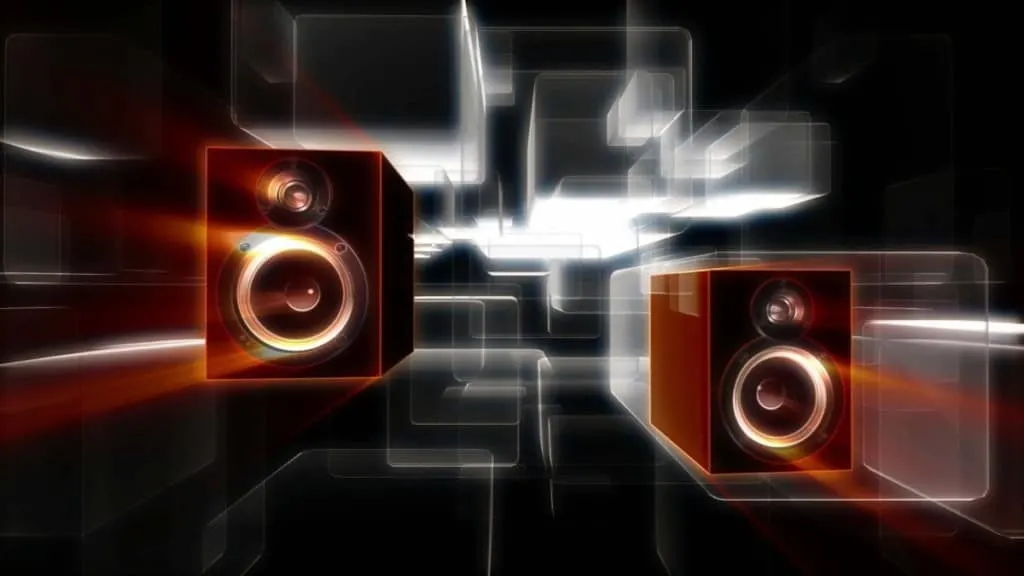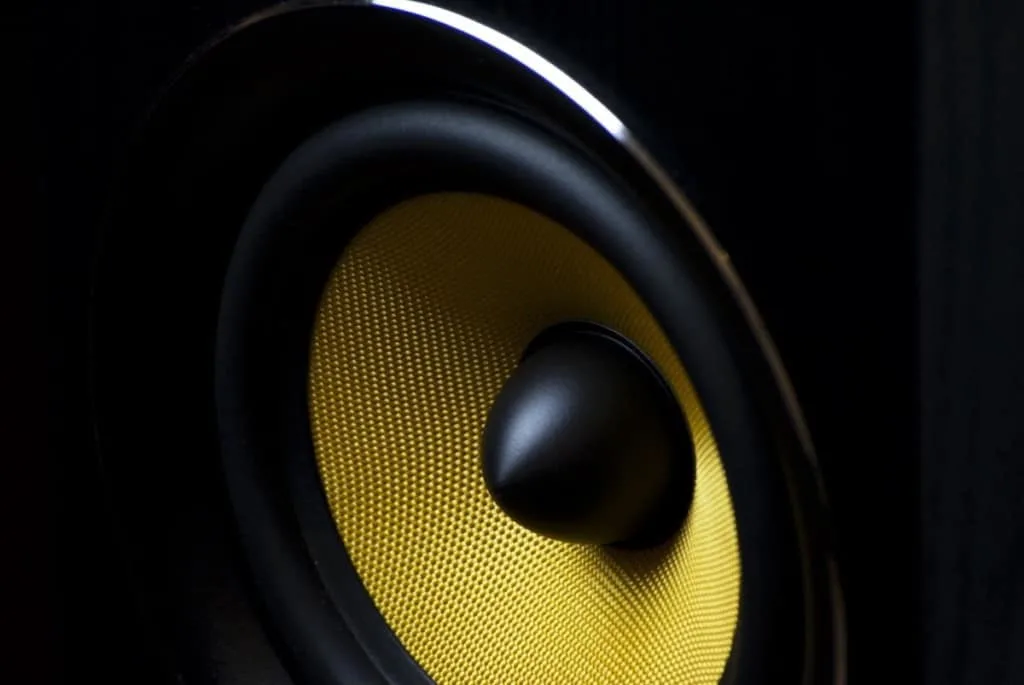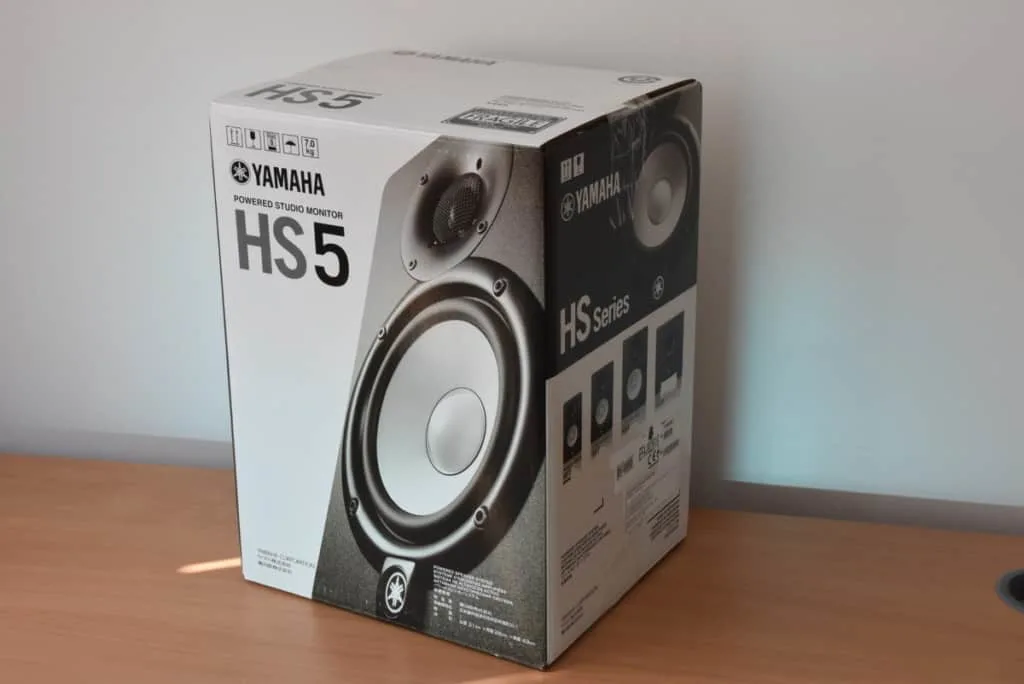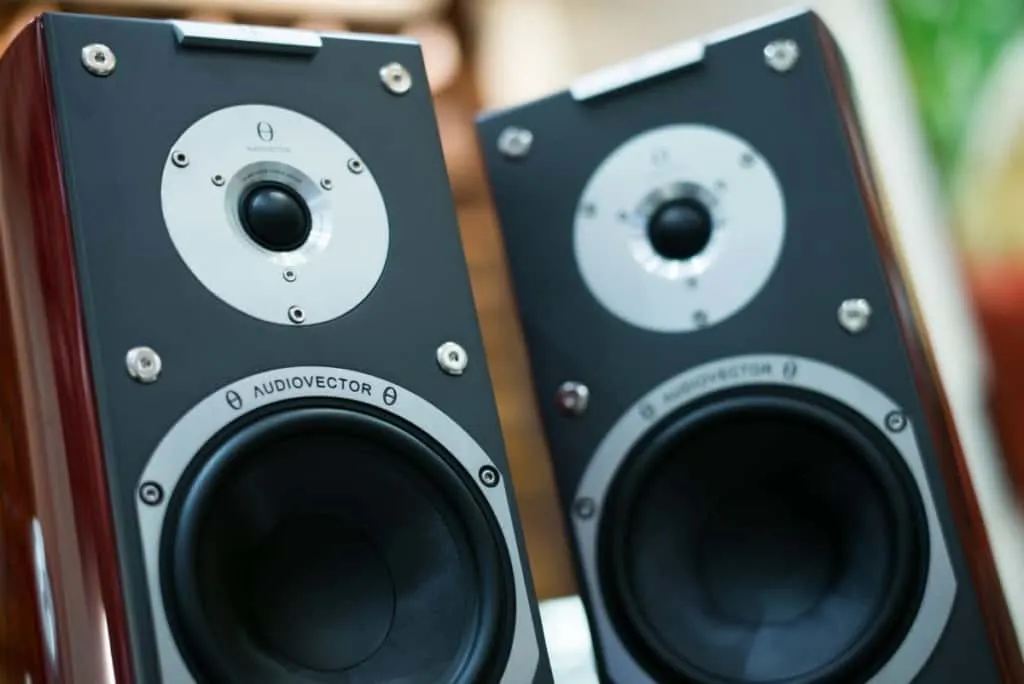Walking into the control room of any big studio on the planet, the first thing that hits you is the state of the art monitor collection piled up and looking straight at you.
They might or might not have a huge Neve console or a ton of rack-mounted Avalon preamps and compressors but big monitors never fail to impress. Now, once you get past the first moment of amazement, you do get a much clearer idea of what does what.
After many years of working with all sorts of brands and sizes, let me answer a question for you that I get asked an awful lot.
Can you use regular speakers as studio monitors?
You could use regular speakers as studio monitors but the sound will be biased. Studio monitors recreate the recorded sound as closely as they can, adding close to nothing to the original signal. On the other hand, regular speakers tune the sound to match the brand’s “coloring” requirements. You should not use regular speakers in your studio, but dedicated ones called studio monitors.
Now, that is the short answer to a big question. Do you want to know the full story? Then read on, because the fun is about to start.

Different Types Of Speakers
Speakers come in different types to accommodate an ever-growing mass of people enjoying music, movies, or any other kind of media.
As time goes by, everything becomes more portable, practical, and smaller. Some of us still have some of the gear our parents or even grandparents used back in their day and age.
For example, I inherited my Dad’s state of the art Technics Hi-Fi system. They sound mesmerizingly amazing with CDs, records, and even cassettes or the radio. But they stay at home, not in the studio.
You’ll see next why speakers can be divided into different categories. Here we go.
Audiophiles
Audiophiles are music lovers.
They are not always are musicians themselves but get lost in that magic realm with the same passion. To put it in different words: they are lucky passengers in the vessel of music while us, musicians, producers, engineers, and such, are at the driver’s seat.
Audiophiles spend a lot of money buying their music-listening gear. But their gear is intended for the passenger and not for the driver. It does sound amazing but with a distinct equalization curve that boosts the exact same frequencies consistently making music more fun; biased in a musical way.
Regular-Listener Speakers
This is a very broad category in which you might put from a JBL GO tiny Bluetooth speaker to an active shelf-top speaker.
The lower the quality, the more frequencies might be boosted because if something can trick your ears into thinking something sounds good it is volume.
When something is loud, more air is moving and you get a positive feeling. That being said, if you get used to hearing music on regular Bluetooth portable speakers and then make the change to highly-crafted gear, you’ll realize just how much you were missing.
These speakers boost many frequencies and are not so consistent making music fun but fake.
Live PA Speakers
These are state of the art equipment that responds to what an audiophile would buy but for a larger audience.
They are usually divided into three different frequencies represented by a sub-woofer or woofer in the lows, a driver or woofer for the mids and a tweeter for the highs. They can handle the full spectrum of frequencies and hence can allow for an immersive experience.
On the other hand, they are not good as studio monitors because they are made for the audience, for them to have fun and hence add a particular EQ curve depending on the manufacturer.

Studio Monitors
Whether in the studio or in a live situation, monitor speakers are designed to be boring.
In fact, my daughter, a four-year-old with curly hair and freckles tells me she hates to play her songs in my state of the art studio rig because it sounds boring. She would much rather use the home theater in our living room for fun (and karaoke).
The first time she said that I couldn’t help laughing out loud but she was actually right (kids usually are). Monitors are made to listen to a work in progress instead of a finished product. They don’t boost any frequencies and can reproduce the original audio as close as possible. This provides certain advantages:
· What you hear is closer to reality – There isn’t, or there shouldn’t be any bias when working with studio monitors. The most noticeable frequency is the lows. You might think you have is a great, tight, and focused, round kick drum working on a pair of regular speakers boosting lows and when you go to the next pair, the kick drum is gone or small and pathetic.
- A mix done in a good pair of flat-response studio monitors works everywhere.
· Studio Monitors don’t generate so much hearing fatigue – Usually, the boosted frequencies of some brands are so imbalanced that you end up having a lot of hearing fatigue in little time. This means that studio monitors sound flat and boring but are designed for you to work with them for hours.
My current setup includes the Yamaha HS5 Studio Monitors. These have been an amazing purchase and suit my studio size perfectly.
Check them out here on Amazon.

What Does Flat Response Mean?
You might have heard this term a lot when searching for monitors. In case you are still wondering what it means (may I remind you that you came to the right place?) it resembles the position of an equalizer in zero.
If you have ever seen a graphic equalizer, you might know that they represent mostly the frequency spectrum that the human ear can capture (roughly 20 Hz to 20 kHz) and allow the user to boost or cut any given band.
When we say that the equalizer is flat, we mean that all the bands are in zero, and hence, the resulting sound is not modified by that particular equalizer. The same applies to the monitors, they are in zero.
Choosing Gear Can Be Really Hard!
Home recording requires a whole series of equipment, and it can be difficult to do the research to figure out exactly what to buy depending upon your budget.
I have written a complete guide to exactly which equipment you should get depending on your budget.
What About Near Field?
This is another term that will take us right into our next item. If you don’t know what near field means when talking monitors, I can clear that up for you (because you came to the right place). Studio monitors differ from floor monitors musicians use live partially because of the distance they are prepared to cover.
Floor monitors in concerts should also be flat-response units but need to blast sound for meters to reach the musicians performing in front of them. Engineers built them with this in mind and they reach optimum results within a considerable distance.
Near field monitors, on the other hand, are manufactured to achieve the same optimum results but much closer and at a lower volume. You should make something like a triangle between you, the screen, and the speakers for the magic to happen at home.
Here’s a cool video on how to place your speakers for optimum performance.
Best Studio Monitor Size
In the world of studio monitors size does matter.
When we talk about regular music-listener speakers, we know that the bass response from a bigger woofer is going to be beefier and fatter. In fact, if you ever owned something like a 2.1 or a 5.1 system, you’ll know that the woofer is way bigger than the rest of the speakers in the system.
Well, if we use such a bass-oriented system on our mixes, what do you think will happen? You guessed it! It will definitely lie to us.
So, here’s what I’ve learned throughout the years: the smaller the room, the smaller the speaker (sounds obvious right?). My first gig as an assistant was in my city’s very own version of the mythical Abbey Road studios.
The control room was so amazing and huge that the engineer would mix the frequencies moving the chair and facing the different speakers positioned further and further away from him. For example, he had 12” speakers for the lows, 8” for the mids, and 5” for the mid-highs. You could just stand in the back of the room and hear the full spectrum. Believe me, if they charged you a ticket to hear your favorite record through those, you would happily pay for it.
Not everyone is so lucky and big speakers in small rooms are not a good idea. If you have a small room, get small speakers, and hear the playback truthfully. Once you are done mixing and mastering, you can take it to whichever speakers you want, crank it up and get that groove going; but for working on the unfinished product, you need the truth.

Use Studio Monitor Stands
My final piece of advice is something that I see many people do the wrong way. If you buy dedicated studio monitors and sit them on your desk, you’ll throw your money away, ruining years of research and development to come up with perfection.
The response will be muddy, and very different from how they are supposed to sound. Spend an extra buck, get them on stands, and mix more clearly.
- For more information on why studio monitor stands are so important, check out my article here.
Final Words On Studio Monitors VS Regular Speakers
Mixing your work with regular speakers might just deceive you into believing you have a killer track.
You might think it sounds beyond amazing but it will not sound great anywhere else. Instead, mixing with flat-response, near-field studio monitors will make your hard work pay off when you hear your mix on the dance floor sounding perfect.
- A mix done with flat speakers works everywhere. A mix done with biased speakers sounds amazing only on those.
One last thing I want to add is that training your ears should always be priority number one.
There is no technology to fix that yet. If you get used to the equalization curve of non-flat speakers, you risk biasing your own ears which will take a lot of time to recover from.
If you can’t afford monitors yet, get some good, flat-response headphones to mix but avoid regular speakers.
Check out my article on mixing without studio monitors here.
Happy (flat-response) recording!
